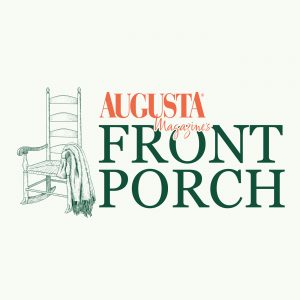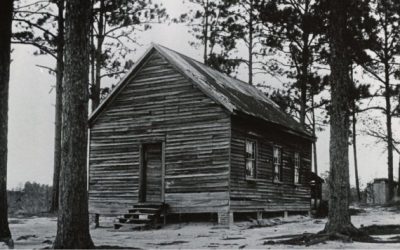THE LATE 1800s were a time of great transformation in American society as invention, industrialization and urbanization accelerated following the Civil War. In urban areas the amenities of indoor plumbing, electricity and labor-saving devices improved life for many. Rapid urbanization and industrialization, however, also led to many problems and created a class of working poor. These two trends met in an interesting way. The challenges of industrialization and urbanization awakened a spirit among people of faith called the Social Gospel Movement, which called them to live out their creeds by helping the less fortunate. At the same time, amenities of urban life allowed middle and upper class women time to do just that. The resulting women’s club movement saw women founding organizations, not only for their own enjoyment and edification, but for helping their fellow human beings. In an era before any safety net—social security, housing or food assistance—these women’s organizations provided for those who were in need, were ill or disabled, were hungry or cold. υ
One of these myriad new clubs was the International Order of the King’s Daughters, founded in New York when Methodist minister’s wife Margaret Bottome joined with nine friends in 1886 to found the King’s Daughters—a “circle” for self-improvement and service to others. Within 10 years, King’s Daughters had spread to 26 states, to Canada, most of Europe, Japan, China, Syria and India. Over the next 15 years these circles had founded more than 700 hospitals, refuges, homes for “incurables,” day nurseries, working girls’ homes and other benevolent institutions.
In May 1888 a notice in The Augusta Chronicle announced a meeting for ladies interested in organizing a circle of the King’s Daughters in Augusta. Once established, this band of King’s Daughters wasted no time. A month later they hosted a festival in the city park with proceeds going to help a family in “desperate need.” The organization grew quickly with additional circles organizing. Support came from all Christian churches and, even though the Daughters was a Christian organization, some of the most generous contributors were “Hebrew friends.”
By the summer of 1889 the by-then nine circles opened a Women and Children’s Hospital at 1465 Broad St. in a frame house. This early first effort proved unsuccessful when running even a small hospital proved to be expensive. Undaunted by this setback, the ladies immediately embarked on a new project to open a day nursery for very young children whose parents and older siblings worked 11-hour shifts in the textile factories. Augusta Factory President Stewart Phinizy donated a house opposite the mill’s office and, with the money left from the hospital fund, the King’s Daughters Day nursery began.
Over the years the King’s Daughters of Augusta performed many services for the poor, each circle choosing its own focus. For example, the Summerville Circle opened a Girls Home Club in Harrisburg to teach the teenaged girls who worked in the mills the arts of cooking, sewing and homemaking. The more services the Daughters performed, the more the organization grew and by the turn of the century there were 14 circles, each working to help those in need in its own way.
One of these was the Mizpah Circle headed by Catherine Rowland and Mary Warren. In 1895, they began paying the rent for several impoverished elderly women in the mill district. They decided that instead of rent, they would found a home where the lonely women could live together. For eight years, they planned, raised money and sought an appropriate location. In December of 1903, the first Mary Warren Home opened on upper Broad Street on a lot the city donated. Original plans to use the old upper police barracks donated by the city changed when Mary Warren died, leaving enough money in her will for a small new home, which was named in her memory. According to her obituary, Mrs. Warren lived a “life full of thought for others and her beautiful charities were dispensed in so unobtrusive a manner.” Well-known Augusta architect Lewis F. Goodrich donated architectural plans as well as his time to supervise the construction. Other citizens donated money for the project along with furnishings and household items. The home, which could hold five women including the matron, was open to all women regardless of creed. (In those days of Jim Crow, that open door policy did not, however, include women of color.) In 1904 donations allowed the addition of two rooms to accommodate two more ladies in need.
Ongoing support of the home and its “inmates,” as they were called, required many fundraising efforts. The Mizpah Circle asked for help and the Lucy Alexander Memorial Circle, named in memory of one of the Augusta founders, stepped up. Over the next six decades these two circles supported the home to give these elderly women “a respite after care worn and troubled lives….”
The story of Miss Viny Coggins is illustrative. Born in Tennessee, she lost her mother as a young child and as the oldest had to take over the responsibility of the household. Soon she came to Augusta with her widowed father and brothers because they all, including 12-year-old Viny, were able to work in the Augusta Factory. She worked for the next 68 years until her worn-out body could spin and weave no more. In that entire time she had only one vacation. With no living family members, she came to the Mary Warren Home, undoubtedly the nicest place she had ever lived. Certainly the teas, holiday dinners, and occasional outings were welcomed luxuries after a life without amenities. Her room was brightened by pots of geraniums and her hands stayed busy knitting complex patterns in lace, which she sold to earn a bit of money. In her bureau drawer was the purchase she had made with her savings from the mill—a black silk dress for her burial.
The original home, which could hold five women including the matron, was open to all women regardless of creed.
By 1911 the home had sheltered 23 women and 20 names filled the waiting list. Seeing the great need, the Daughters’ fundraising efforts for a larger home began in earnest. For the next three years the directors worked to find a suitable place. Various proposals were made including leasing space on the new MCG campus at the
former Orphan Asylum or moving onto city property at the east end of Allen Park. For a time, they considered building an extension to the current home, but new city stables across Broad Street had brought odor, flies and mosquitoes to plague the ladies. The city decided to help with the purchase of land. Finally the directors announced in August 1914 that they had acquired a “beautiful and most suitable lot” on the corner of Hickman Road and Central Avenue, right on the Monte Sano Streetcar Line. On the Hill, surrounded by trees, it would provide a pleasant and healthy environment.
With money from the sale of the old Broad Street property to Claussen’s Bakery and monies from three years of fundraising in hand, the Mizpah and Lucy Alexander Memorial Circles began work on the structure designed by prominent architect G. Lloyd Preacher. The Grand Lodge Masons ceremonially laid the cornerstone in early December; in late March the “handsome brick structure” was complete and ready for the installation of its fixtures. When the home opened for public viewing on April 13, The Augusta Chronicle praised this “Magnificent Effort of Women.”
The home looked much as it does today—two stories, broad porches, large entry hall, with the living room on one end and dining room on the other. Off the dining room was a butler’s pantry and a kitchen. Downstairs were six bedrooms on each side of the hall and upstairs another six. The first floor had an infirmary and the second included a linen room, sewing room and bathroom. Wooden beams gave character throughout. The dining room was named in honor of long-serving board president Catherine Rowland, “Miss Kate” as she was known. It boasted green velvet rugs with a china chest and a buffet filled with linen.
In addition to having a beautiful and comfortable home, the women were often treated to events and outings by local community groups—a trip to the theater, a joy ride…
The living room at the other end bore the name “Lucy Alexander Memorial Room.” Furnished with mission furniture and brown rugs, the room included portraits of Lucy Alexander and Mary Warren. A large library table held books and magazines for the enjoyment of residents and guests. Each bedroom was nicely furnished with a white iron bed, dresser, wardrobe, table and washstand. Every bedroom had been offered as a naming opportunity; all had been taken by those who wished to memorialize or honor mothers, friends or churches.
Thanks to the diligent fundraising of the King’s Daughters and the support of the community, all but $500 of the $15,000 construction cost and $3,000 furnishings had been paid by the time of the home’s opening. Augusta merchants generously provided goods and services. Five women, ranging in age from 69 to 88 moved in from the old home, along with Mrs. Thurmond, the matron, who had been with the home for more than a decade. Four new women were admitted immediately and applications were under review until the home was full. The only requirement was that the women were without resources or places to go. For those lucky enough to reside there, it was a wonderful home in the true meaning of the word. Year after year Grand Jury Presentments after annual inspections noted the contentment of the ladies there.
In addition to having a beautiful and comfortable home, the women were often treated to events and outings by local community groups—a trip to the theater at the Grand, a “joyride” provided once a year by the Rotary Club, often the first automobile ride the women had ever experienced. According to The Augusta Chronicle, on the 1916 ride, the group stopped at Hollingsworth Candy for some “souvenirs,” at Claussen’s Bakery for a treat and at Augusta Ice and Beverage where they received “tubs of ice cream” to take to the home. Over the years the “inmates” benefited from devotionals offered by various churches, performances by local groups—in World War I from Camp Hancock—Thanksgiving and Christmas dinners provided by the Daughters and many other parties and events.
Each spring the two circles of King’s Daughters had a fundraising tea. This open house quickly became one of the social events of the season as the circles went all out with flowers and wonderful edibles. Guests were asked to donate one penny for every year of their age, often bringing in hundreds of dollars.
For decades the home continued to enjoy the dedicated work of the Mizpah and Lucy Alexander Memorial Circles. In fact, their commitment to the home kept the circles going even after the King’s Daughters organization began to wane in the area. (Today Georgia has no circles.) In the early 1950s they were two of only three circles still in operation. In the early 1980s the board became a private foundation composed of descendants of members of the Mizpah and Lucy Alexander Circles who had labored so faithfully for so many years. In 1993 that board voted to close the home at the end of the year. Costs had risen and times had changed.
Now a 100-year-old lady herself, the Mary Warren Home is getting a new lease on life. This time the rooms will be filled with college students aspiring to become physicians. Currently undergoing a restoration that will meet historical certification standards, the dignified brick home will once again be part of neighborhood life. While the Monte Sano Streetcar Line no longer runs, the Georgia Regents University shuttle passes by many times each day. Surely this historic place will be a comfortable home for its new residents, as it was for the hundreds of women who found respite there for so many years.
Dr. Lee Ann Caldwell is an Augusta historian, author and director of the Center for Study of Georgia History at Augusta University.
This article appears in the November/December 2015 issue of Augusta Magazine.





